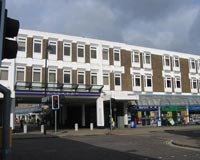James Driscoll explains the latest in a long line of cases that ask the deceptively simple question: what is a house?
Key points
- Judges should not distinguish between buildings solely on their external appearance or internal layout
- Shops with flats above can be reasonably called a house provided that there is genuine substantial residential use
Whether it is correct to call a building a “house” has been a common dispute in enfranchisement claims. Even after countless decisions on this issue there is still much uncertainty over which buildings meet the definition. If a property is a “house”, and a claimant has a qualifying lease of it, the freehold can be acquired under the Leasehold Reform Act 1967 (“the 1967 Act”).
The question was probably easier to answer when claimants had to fulfil a residence test, but this was abolished (with two exceptions) for claims since 2002. One effect of this change (which applies also to flat enfranchisement and new lease claims) is that investors, companies, second home owners and other non-residents can buy the freehold if the 1967 Act applies. It broke the historic link between owner-occupation and leasehold reform.
“A house reasonably so called”
The word “house” is quite widely defined by section 2(1) of the 1967 Act, which reads as follows:
“… ‘house’ includes any building designed or adapted for living in and reasonably so called, notwithstanding that the building is not structurally detached, or was or is not solely designed or adapted for living in, or is divided horizontally into flats or maisonettes: and-
a) where a building is divided horizontally, the flats or other units into which it is so divided are not separate ‘houses’ though the building as a whole may be: and
b) where a building is divided vertically, the building as a whole is not a ‘house’ though any of the units into which it is divided may be.”
This is a wide definition: terraced houses, or mixed-use buildings such as residential accommodation above an office or a shop, may be “houses”. There are two key issues:
(a) Was the building designed or adapted for living in? (b) Can it reasonably be called a house?
The latest case to raise these questions (and probably not the last) is Jewelcraft Ltd v Pressland and another [2015] EWCA Civ 1111; [2015] PLSCS 300. It comes just three years after the issue was considered by the Supreme Court in Day and another v Hosebay Ltd; Howard de Walden Estates Ltd v Lexgorge Ltd [2012] UKSC 41; [2012] 3 EGLR 33, which established that buildings that were built as houses but were now used commercially were not houses “reasonably so called”.
In between came two decisions of the Court of Appeal. In Henley and another v Cohen [2013] EWCA Civ 480; [2013] PLSCS 91 – a case with facts similar to Jewelcraft – the court decided that the particular building could not be reasonably called a house; and in Earl Cadogan and another v Magnohard Ltd [2012] EWCA Civ 594; [2012] 2 EGLR 74 it was found that a seven-storey building consisting of six residential units and three small shops could not reasonably be called a house.
Can a shop and a flat be a house?
What of the Jewelcraft decision? Here the building consists of a ground floor purpose-built shop with residential accommodation on the floor above. It forms part of a parade of shops with a similar appearance and design, which is a common sight all over the country. Originally it was a shop which had internal access to some residential accommodation. In the 1970s it was altered, with the result that the residential part became self-contained.
In the county court, Judge Dight approached the issue by asking whether it was “reasonable” to call the building a house. He concluded that, given the history of the property, its physical appearance, the layout and the terms of the new lease, it was not. The Court of Appeal disagreed, principally, it seems, on the basis that the judge should have applied the decision in Tandon v Trustees of Spurgeons Homes [1982] 2 EGLR 73, where the House of Lords decided by a majority that the building which consisted of a flat over a shop could reasonably be called a house. (The court appears to have overlooked the doubts expressed over this aspect of Tandon in Hosebay.)
The decision in Henley was distinguished, as there the property consisted of a purpose-built flat over a shop and the upper floor had been used for storage for adjoining shop premises. A covenant in the lease of the property prohibited the leaseholder from carrying out alterations. Without consent the leaseholder converted the upper floor into a flat and later claimed the freehold. In Henley, the Court of Appeal upheld the decision that the building could not be considered a house reasonably so called.
In Jewelcraft, Patten LJ described the Henley decision as “an exceptional case” as there was no residential use of the building until shortly before service of the claim notice. He also expressed doubt that the earlier case was decided correctly.
If it looks like a house, and acts like a house…
Applying Tandon, the court stated that shops with accommodation above can in law be reasonably called a house provided that part of the building is used for residential purposes. Judges should, Patten LJ stated, be astute to dismiss claims where there is no (or no genuine substantial) residential use; or cases (such as an office block with a caretaker) which should be excluded as a matter of policy. In other cases, judges should not distinguish between buildings solely on their external appearance or internal layout. A bold statement, but one unlikely to the last word on this subject.
.
Professor James Driscoll is a solicitor and a writer








